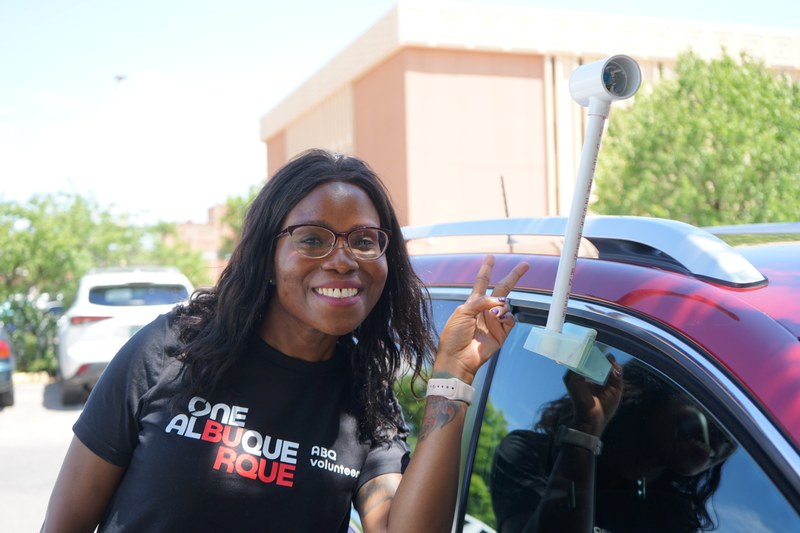
City Releases Results of Urban Heat Mapping Event
Data collected across the city shows heat disparities
Today, the City of Albuquerque released results from last summer’s Urban Heat Watch Campaign showing concentrations of heat in the Albuquerque metro area. On July 9, 2021, volunteers and City staff used specially designed thermal sensors mounted on their cars and bicycles and drove prescribed routes to record ambient temperatures and humidity, twice during the day. The resulting maps show temperature differences as high as almost 17 degrees Fahrenheit in different portions of the City, with the hottest temperatures in downtown and neighborhoods adjacent to the interstate highways.
“We know that rising summer temperatures in Albuquerque is a long-term problem, and it’s time to get a handle on it,” said Mayor Tim Keller. “These maps are a starting point for understanding where we need to enact climate resilience and adaptation strategies to protect our most vulnerable neighborhoods.”
Participants in the heat watch campaign gathered 67,662 temperature points showing citywide temperatures in the morning that ranged from 62 to 78 degrees Fahrenheit and temperatures in the afternoon ranged from 94 to 105 degrees. Differences in temperature can be attributed to lack of tree canopy and shade coverage, in addition to concentrations of asphalt. Areas showing high concentration of heat are anticipated to align with the locations of low-income communities, future iterations of the mapping results will be compared with social equity indicators.
With more detail than possible with satellite data alone, the local maps identify where the City can act to protect vulnerable neighborhoods now and in the future from extreme heat risk. This project was the result of a partnership between the City of Albuquerque and the National Integrated Heat Health Information System (NIHHIS) community members to participate in collecting data about the distribution of heat as part of a regional effort to map where people are most at risk during extreme heat waves this last July. The project is intended to raise awareness among volunteers and residents about heat risk, incorporate local perspectives to produce heat maps, and pursue solutions.
“This data is so important in showing how heat impacts neighborhoods in different ways throughout the city,” said Sustainability Officer, Kelsey Rader. “Strategically increasing shade and tree canopy can go a long way in protecting residents from dangerous summer temperatures, and everyone can play a role in making those changes.”
See the full results of the Heat Watch Campaign and download the report.
This builds on the Keller administration’s substantial work to date on sustainability, including:
- Won a $2.7 million federal grant to bring the first electric buses to Albuquerque,
- Signed the Paris Agreement committing to climate action,
- Installed 38 solar projects at city-owned buildings,
- Launched the Green Team to expand sustainability across departments,
- Launched the Mayor’s Energy Challenge to support local businesses reduce energy use,
- Won Bloomberg American Cities Climate Challenge with funding for sustainability efforts,
- Made the transition to more sustainable LED street lights citywide,
- Provided over 200 homes with free energy audits and upgrades in partnership with PNM, Partnership for Community Action and Prosperity Works,
- Partnered with PNM to launch the Solar Direct project to get to achieve over 80% renewable energy use,
- Purchased the first electric vehicles for the City fleet, and enacted a “Zero Emissions First” fleet vehicle adoption policy,
- Achieved LEED for Cities Silver certification,
- Ranked 40th on the 2020 City Clean Energy Scorecard—and 5th most improved—by the American Council for an Energy-Efficient Economy (ACEEE),
- Invested $300,000 in VW settlement funding to add 18 electric charging stations in Albuquerque by Summer 2021, and
- Launched the 2021 Climate Action Plan.
